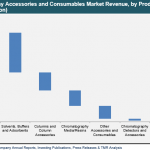
There’s simply no denying the importance of the consumer technology accessories market. It’s a consistent lifeline for an industry that sees new technologies come and go. In 2015 alone, the mobile accessories segment (which is just a sliver of the overall accessories category) recorded roughly $81.5 billion in revenue. ABI Research, at the time, said it expected the mobile tech accessories market to jump to more than $100 billion by 2020.
Of course, this category includes other products like headphones, cables and wires, screen protectors, car tech, and more.
So where exactly is the accessories market heading? How will mobile accessories hit that $100 billion revenue mark? And what kinds of innovations can we expect to see over the next few years?
Dealerscope worked with members of the Consumer Technology Association’s Accessories Board to get those answers. Here’s what they had to say.
Dealerscope: What keeps the accessories market ticking?

Kim Fassetta, Aftershokz
Kim Fassetta, CMO, Aftershokz: Innovation is what keeps the accessories market ticking. The purpose of accessories is to better our experience with products and services, so it’s important that manufacturers think creatively about the items we bring to market, and make sure they’re serving a purpose and delivering added value.
Tate Morgan, President, Petra Industries, LLC: The introduction of innovative new products inspires accessory manufacturers to create accessories that improve the original functionality and enhance user experiences. There is so much interaction between products today that accessories become a natural extension. Consumers will always desire ways to personalize technology products to fit their lifestyles and personalities.
Bruce Borenstein, Global VP of Sales, Nuheara: It’s all about the rapid introduction of new technology and upgrades to existing products. As technology is rolled out, you can be pretty sure that attachment products will follow shortly thereafter. When Apple brought out the iPhone 7 without the headphone jack, companies rushed to come out with adapters.
At times this market can seem flooded with options. Any advice for retailers as they look to make sense of it all?
Fassetta: First, offer your customers products and services that will enhance their lives. The sorts of things that will make such an impact that they’ll be memorable and keep people coming back. We have a couple of retail partners that do this very well by making sure their inventory assortment is an array of products that really add value. Second, find ways to give your customers a chance to try before they buy. The demo experience adds so much value to the shopping experience because it gives customers confidence in their selection.

Tate Morgan, Petra
Morgan: It is always important to stay current with trends by reading trade publications, newsletters and websites, as well as attending trade shows. The other side of the coin is to know your customers so you can match your product assortments to best meet their needs. As a distributor that provides access to many brands in a variety of categories, we recommend consulting with our sales reps for guidance about which products and brands suit the needs of a particular clientele.
We also advise that retailers go narrow and deep in-store, and wider on dot-com retail. That is—stock the necessary inventory on a limited number of products you know your customers will want, but offer the widest possible assortment online. Working with a distributor like Petra with a huge assortment and highly efficient pick, pack, and drop-ship processes gives retailers of all sizes an opportunity to compete.

Bruce Bornstein, Nuheara
Borenstein: It’s really a matter of who your audience is. If you tend to cater to a higher-end demographic, you certainly want to stay away from the commodity offerings available at deep discounts. Those types of items work well on non-assisted sales floors. However, if you engage one on one with your consumers, you have a chance to demo, explain and qualify to them the best solutions to meet their needs.
What technology (or technologies) influences this market the most, and why?
Fassetta: These days, social media has an incredible influence on what manufacturers make and what consumers buy. Smart brands use social networks as learning tools, to gain insight on what their market is looking for, and why. Social media can be an inexpensive and effective research tool if used properly.
Morgan: Wireless technologies (cellular, WiFi and Bluetooth) applied to smart home, app-connected and voice-activated products and accessories are having a significant impact on the consumer technology market. The ubiquity of smartphones and apps that connect to home Wi-Fi networks through cellular data connections make it possible for users to easily interact with devices in their homes from virtually anywhere in the world. The fact that many of these products require only simple DIY set up and installation are making truly smart homes a reality for more and more consumers.
Borenstein: If I had to pick one, it would be smartphones. Headphones, cases, apps, battery extenders, the list goes on. I don’t think there’s been a technology out there that has lent itself more to accessories than smartphones.
Success in the accessories business requires staying on top of hot tech trends. Any tips you can share for keeping your finger on the pulse of an industry?
Fassetta: Read everything you can—and not just about the stuff that naturally interests you or that happens to fall within your brand’s orbit. By staying in your comfort zone, you’re likely to miss some really interesting insights, any of which could potentially impact decisions you make about your brand. My inner circle regularly shares articles, podcasts and even ads that catch their eye for one reason or another, and we make it a priority to give these items our attention. The result is that we’re all more broadly aware of what’s happening in the industry and around the world.
Morgan: There is no limit to resources that provide descriptions, specifications, reviews and rankings for existing and soon-to-be released products. And there is no substitute for doing your homework.
Most of us got into the business of selling technology and tech accessories because we love the products. When you maintain your passion for this business, your efforts feel less like ’work.’ I believe we’re all truly fortunate to be involved in the consumer technology industry.
Borenstein: A good place to see what might be coming down the road is regular visits to crowdfunding sites like Indiegogo and Kickstarter. Of course, well established trade publications such as Dealerscope always have good information, too. And, setting up Google Alerts for the tech you want to follow is another good resource.
[“source-dealerscope”]











